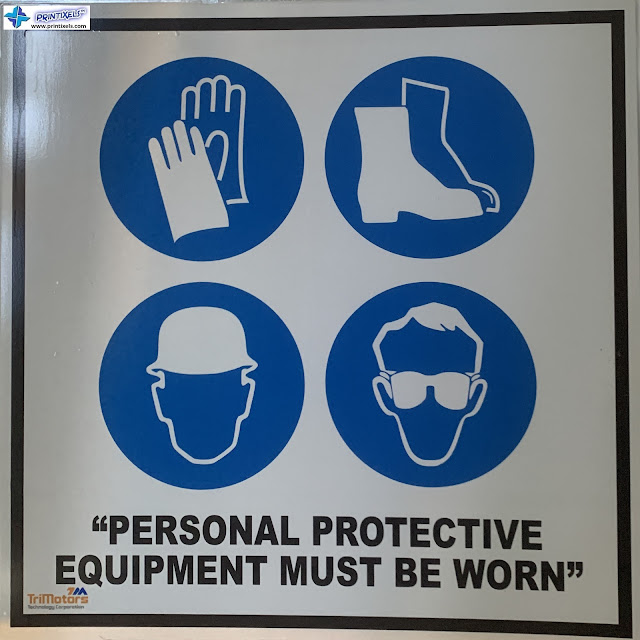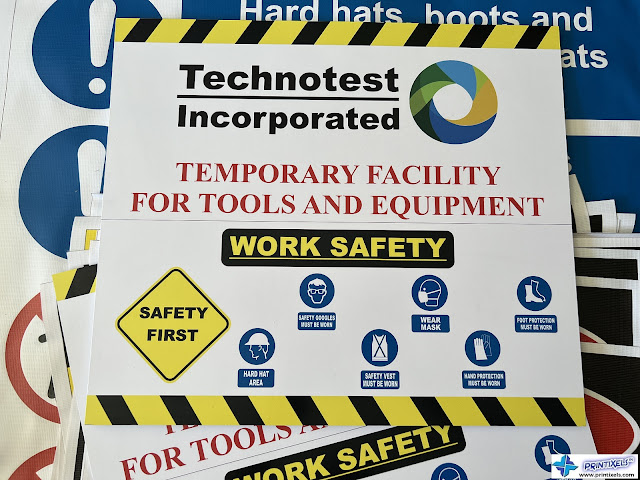
In this dynamic environment, effective safety protocols are paramount, and among the simplest yet most crucial are construction safety signages. These visual cues are not merely decorative; they are vital communication tools designed to prevent accidents, guide behavior, and protect the lives of workers and the public alike.
Construction sites are inherently hazardous. Workers operate heavy machinery, deal with precarious heights, handle volatile materials, and encounter constantly changing environments. For both seasoned professionals and casual visitors, the immediate recognition of potential dangers or mandatory actions is critical. This is where safety signages become indispensable. They serve as silent sentinels, delivering critical information at a glance, thereby minimizing confusion and maximizing safety awareness.
In the context of the Philippines, the Department of Labor and Employment (DOLE) through its Occupational Safety and Health Standards (OSHS) mandates the use of appropriate safety signs. These regulations align with international best practices, emphasizing clarity, consistency, and visibility. Broadly, construction safety signages can be categorized based on their purpose and universally recognized color codes:
Prohibitory Signs: These signs indicate actions that are strictly forbidden. Characterized by a red circular band with a diagonal line across a black pictogram on a white background, they visually communicate "do not." Examples include "No Entry," "No Smoking," "No Mobile Phones," or "Do Not Operate." Their immediate objective is to prevent dangerous behaviors or access to restricted areas.
Mandatory Signs: These signs specify actions that must be taken to ensure safety. They feature a blue circular background with a white pictogram. Common examples on a Philippine construction site are "Hard Hat Area," "Eye Protection Must Be Worn," "High Visibility Vest Required," or "Foot Protection Must Be Worn." These signs are crucial for enforcing the use of Personal Protective Equipment (PPE), which is a cornerstone of construction safety.
Construction sites are inherently hazardous. Workers operate heavy machinery, deal with precarious heights, handle volatile materials, and encounter constantly changing environments. For both seasoned professionals and casual visitors, the immediate recognition of potential dangers or mandatory actions is critical. This is where safety signages become indispensable. They serve as silent sentinels, delivering critical information at a glance, thereby minimizing confusion and maximizing safety awareness.
In the context of the Philippines, the Department of Labor and Employment (DOLE) through its Occupational Safety and Health Standards (OSHS) mandates the use of appropriate safety signs. These regulations align with international best practices, emphasizing clarity, consistency, and visibility. Broadly, construction safety signages can be categorized based on their purpose and universally recognized color codes:
Prohibitory Signs: These signs indicate actions that are strictly forbidden. Characterized by a red circular band with a diagonal line across a black pictogram on a white background, they visually communicate "do not." Examples include "No Entry," "No Smoking," "No Mobile Phones," or "Do Not Operate." Their immediate objective is to prevent dangerous behaviors or access to restricted areas.
Mandatory Signs: These signs specify actions that must be taken to ensure safety. They feature a blue circular background with a white pictogram. Common examples on a Philippine construction site are "Hard Hat Area," "Eye Protection Must Be Worn," "High Visibility Vest Required," or "Foot Protection Must Be Worn." These signs are crucial for enforcing the use of Personal Protective Equipment (PPE), which is a cornerstone of construction safety.




Warning Signs: These signs alert individuals to potential hazards or dangerous conditions. They are recognized by a yellow triangular background with a black border and a black pictogram. Warning signs are further subdivided into:
Danger Signs: With a "DANGER" header, these indicate an immediate hazard that, if not avoided, will result in death or serious injury (e.g., "High Voltage," "Confined Space," "Flammable Materials").
Caution Signs: With a "CAUTION" header, these indicate a potential hazard that, if not avoided, could result in minor or moderate injury (e.g., "Wet Floor," "Slippery Surface," "Watch Your Step").
General Warning Signs: Simply using the yellow triangle with a specific pictogram (e.g., "Falling Object Hazard," "Excavation," "Overhead Cranes").
Emergency and Informational Signs: These signs provide guidance on emergency procedures or general site information.
Emergency Signs: Typically green square or rectangular signs with a white pictogram, they indicate emergency exits, first aid stations, or assembly points (e.g., "Emergency Exit," "First Aid," "Assembly Point").
Fire Safety Signs: Red square or rectangular signs with a white pictogram, indicating the location of fire extinguishers, fire alarms, or fire exits (e.g., "Fire Extinguisher," "Fire Alarm Call Point").
Informational Signs: Often blue or green rectangular signs, providing general information about the site, directions, or contact details (e.g., "Site Office," "No Through Way," "Visitor Parking").
For these safety signages to be truly effective in the Philippine context, several factors must be considered. Firstly, visibility is paramount. Signs must be strategically placed, well-lit, and unobstructed, ensuring they are seen and understood from an appropriate distance. Secondly, clarity and simplicity are key.
Danger Signs: With a "DANGER" header, these indicate an immediate hazard that, if not avoided, will result in death or serious injury (e.g., "High Voltage," "Confined Space," "Flammable Materials").
Caution Signs: With a "CAUTION" header, these indicate a potential hazard that, if not avoided, could result in minor or moderate injury (e.g., "Wet Floor," "Slippery Surface," "Watch Your Step").
General Warning Signs: Simply using the yellow triangle with a specific pictogram (e.g., "Falling Object Hazard," "Excavation," "Overhead Cranes").
Emergency and Informational Signs: These signs provide guidance on emergency procedures or general site information.
Emergency Signs: Typically green square or rectangular signs with a white pictogram, they indicate emergency exits, first aid stations, or assembly points (e.g., "Emergency Exit," "First Aid," "Assembly Point").
Fire Safety Signs: Red square or rectangular signs with a white pictogram, indicating the location of fire extinguishers, fire alarms, or fire exits (e.g., "Fire Extinguisher," "Fire Alarm Call Point").
Informational Signs: Often blue or green rectangular signs, providing general information about the site, directions, or contact details (e.g., "Site Office," "No Through Way," "Visitor Parking").
For these safety signages to be truly effective in the Philippine context, several factors must be considered. Firstly, visibility is paramount. Signs must be strategically placed, well-lit, and unobstructed, ensuring they are seen and understood from an appropriate distance. Secondly, clarity and simplicity are key.
While universal symbols are the norm, supplementing with clear, concise text, potentially in both English and Filipino, can enhance understanding among a diverse workforce. Thirdly, durability is essential. Given the often harsh weather conditions in the Philippines, signs must be made from weather-resistant materials to withstand rain, heat, and sun exposure without fading or deteriorating. Finally, consistent maintenance and regular inspection ensure that signs remain legible, relevant, and correctly positioned throughout the project lifecycle.
Ultimately, construction safety signages are more than just legal requirements; they are an investment in human lives and project success. By diligently implementing and maintaining a comprehensive system of clear, appropriate, and visible safety signs, Philippine construction companies can significantly mitigate risks, cultivate a proactive safety culture, and ensure that every worker returns home safely at the end of the day.
Ultimately, construction safety signages are more than just legal requirements; they are an investment in human lives and project success. By diligently implementing and maintaining a comprehensive system of clear, appropriate, and visible safety signs, Philippine construction companies can significantly mitigate risks, cultivate a proactive safety culture, and ensure that every worker returns home safely at the end of the day.

























0 Comments:
Post a Comment